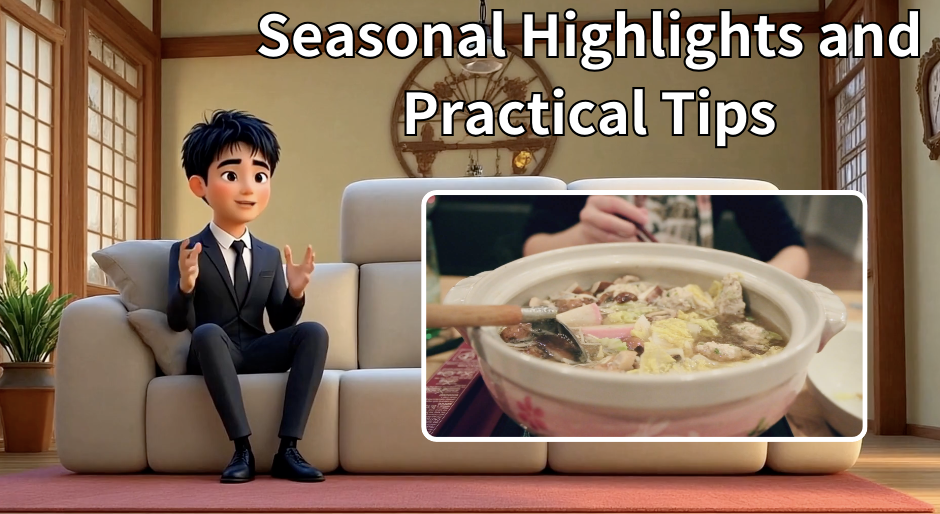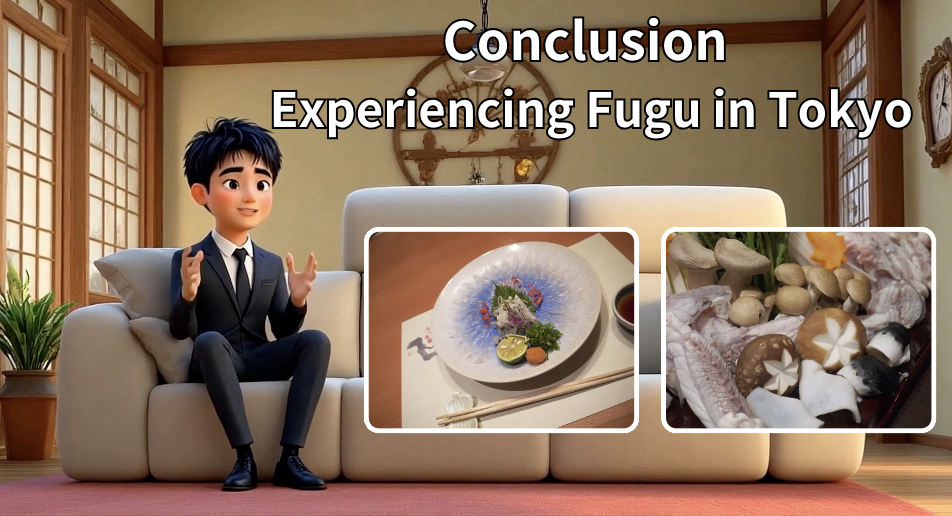Welcome, everyone, especially those visiting Tokyo from around the world, and anyone curious about Japanese cuisine. Today, we’re going to delve into the fascinating world of fugu, also known as pufferfish.
Renowned for containing a potent toxin, this fish has earned the dual reputation of being both dangerous and delicious. In Japan, fugu has historically been considered a luxurious delicacy, but it has also been strictly regulated over the centuries due to safety concerns. In recent years, reliable distribution networks and improved farming methods have made it more accessible, though it still retains its status as a special-occasion treat. In this video, we’ll explore what makes fugu so special, trace its history in Japan, and discover how you can enjoy it right here in Tokyo.
Understanding Fugu – Safety and Flavor

First, let’s discuss the basics of fugu. The species most commonly eaten in Japan is the torafugu, which can be identified by its speckled pattern. While this fish looks rather cute, it carries a powerful neurotoxin called tetrodotoxin, primarily found in its internal organs and blood. Because of this, in Japan, chefs must obtain a special license to handle and serve fugu. The licensing process involves intensive study and practice, culminating in both written and practical exams. Once properly prepared, fugu is considered perfectly safe. At the same time, it offers a unique taste experience: the flesh is firm yet delicate, with a subtle sweetness that becomes more pronounced the more you chew. Whether served as sashimi or in a hot pot—known as “tecchiri”—the result is a refined flavor treasured by connoisseurs.
A Brief History of Fugu in Japan

Fugu’s story stretches back many centuries. Archaeological evidence suggests that it was consumed in ancient times, as fugu bones have been discovered in prehistoric shell mounds. However, the fish’s toxicity has occasionally caused turmoil. There’s a famous anecdote that the warlord Toyotomi Hideyoshi once banned the consumption of fugu after many samurai fell ill while on campaign. During the Edo period, various domains also forbade fugu eating due to recurrent poisonings. Over the years, though, skilled fishermen and chefs, particularly around Shimonoseki in Yamaguchi Prefecture, refined their techniques, learning how to remove the toxic parts and serve safe, delicious fugu. By the late 19th and early 20th centuries, local governments had established strict licensing systems. Today, Japan’s rigorous regulations ensure that diners can confidently enjoy fugu without worry.
Enjoying Fugu in Tokyo

Although Shimonoseki is often cited as Japan’s fugu capital, Tokyo boasts an impressive variety of fugu restaurants, from affordable chains to Michelin-starred establishments. If you’re a first-timer, it might be best to start with a well-known chain that offers set menus or courses. These typically include the classic fugu sashimi—translucent slices arranged in an elegant pattern—along with a hot pot, fried fugu, and sometimes additional seasonal dishes. Prices can range from around 5,000 to 10,000 yen per person, making fugu more accessible than in the past. If you’re looking for a luxurious celebration or a truly memorable gastronomic adventure, you could visit a high-end, long-established restaurant. Some of these places procure their fish early in the morning from Toyosu Market, and it’s possible to witness the chef’s remarkable skill as they expertly slice the fish into paper-thin pieces of sashimi. The culinary artistry on display is part of the overall experience, turning a meal into something akin to a performance.
The Diversity of Fugu Cuisine

When it comes to fugu dishes, you’re not limited to sashimi alone. Fugu hot pot—called “tecchiri”—is a classic, especially in the cold winter months. The fillets, still on the bone, are simmered with vegetables, allowing the fish’s essence to permeate the broth and enhance the final dish, which often culminates in a comforting bowl of rice porridge. Another favorite is fried fugu, featuring crispy skin and tender, juicy flesh inside. Some restaurants offer grilled or roasted fugu, while others might serve a modern “fugu carpaccio,” with olive oil and herbs adding a new dimension to the traditional flavor profile. All these variations emphasize the fish’s delicate taste while providing a fresh perspective on how fugu can be enjoyed.
Culinary Traditions and Modern Innovations

Fugu holds a special place in Japan’s culinary heritage, and chefs have honed their skills over centuries to accentuate its nuanced flavor. Traditionally, chefs use minimal seasoning—often just salt, soy sauce, or citrus-based sauces—letting the fish’s natural qualities shine through. However, younger chefs are experimenting with Western ingredients and cooking methods, introducing new possibilities such as fugu with truffle oil or fusion-style marinades. These modern takes expand the repertoire of fugu cuisine, attracting both traditionalists and more adventurous palates. The flexibility and creative potential of fugu highlight why it remains one of Japan’s most intriguing gastronomic delights.
Pairing Fugu with Drinks

Because of its delicate flavor, fugu pairs wonderfully with sake. Many restaurants recommend “hi-re-za-ke,” a drink made by steeping roasted fugu fins in hot sake. The fins release a unique aroma and umami, and lighting the surface of the sake to burn off excess alcohol is a little performance in itself. The flavor can be quite strong, so it’s best sipped slowly to appreciate its depth. Those who prefer milder options might choose a crisp beer or a light white wine, but if you feel adventurous, hi-re-za-ke is a distinctive taste of Japanese food culture that can truly enhance a fugu meal.
Seasonal Highlights and Practical Tips

Fugu is generally considered a winter delicacy, with peak season running from about November through February. During these colder months, the fish are at their best: the flesh is firmer, and the flavor richer. However, high-quality fugu can still be found through early spring, and farmed fugu ensures a consistent standard year-round. In Tokyo, restaurants typically source their fugu directly from Toyosu Market, which receives shipments from across the country. Whether you choose a chain or a boutique restaurant, it’s wise to book in advance, especially during the winter high season. Many places now offer online reservations and English-language menus, so you can plan ahead without too much trouble.
Conclusion – Experiencing Fugu in Tokyo

Fugu stands out as a symbol of Japanese culinary expertise, embodying centuries of skill, strict safety measures, and a deep appreciation for fine flavors. Though once exceedingly rare and expensive, it has become more affordable—yet it still maintains the special aura of a delicacy reserved for memorable occasions. In Tokyo, you have the opportunity to sample this exceptional fish in settings ranging from casual to opulent, all under the watchful care of licensed chefs. Whether you opt for a traditional course menu or experiment with new, creative preparations, you’ll discover that each bite reveals something special about fugu’s subtle taste and cultural significance. We hope this exploration has inspired you to consider fugu as part of your Tokyo dining adventure. Safe, delicious, and steeped in history, fugu is undoubtedly one of Japan’s most remarkable gastronomic experiences. Enjoy your trip, and if you decide to try fugu, may it be an unforgettable highlight of your journey through Japan.


